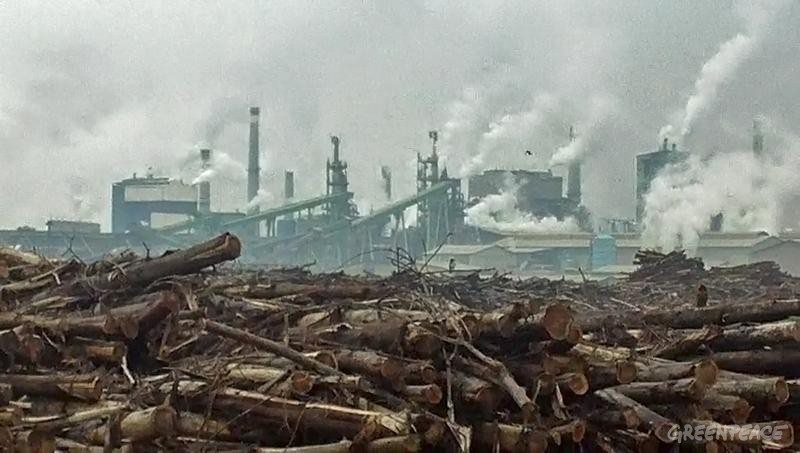Asia Pulp & Paper is planning to build a huge new pulp mill in South Sumatra, Indonesia, although the company is still trying to publicly deny it. This will reportedly be one of the world’s biggest pulp mills, with a planned production capacity of up to 2 million tonnes per year. APP is already in contact with large machine building companies in order to source the required equipment.
Blogpost by Kees Kodde, Forest Campaigner, GP East Asia
Building new mills without sufficient sources of plantation fibre already being available will be a disaster for the forests, because history has shown that APP’s pulp mills are not only fed by pulp plantations but by rainforests. If this pulp mill is built, it looks set to generate a huge pulp deficit, which the rainforests of Indonesia will be paying for, for years to come.
A new coal fired power plant locks us into a climate wrecking energy model. The danger is that a new mega-pulp mill will lock APP into a model of forest destruction. Because the financial investments required to build such a mill are enormous, and therefore huge debts are created. These debts can only be paid by running the pulp mill at a certain capacity and speed. APP has already gone bust once, more than a decade ago, by operating to just this expansion model.
APP will need banks and insurance companies to finance this mill. However, banks are risk-averse and are increasingly becoming aware of risks associated with forests and climate. And if there is one company that embodies ‘environmental risk’, it is APP.
A coalition of 60 NGOs and civil society groups have come together to send an appeal to the financial sector not to finance the mill. The appeal is supported by a large range of Indonesian civil society groups and international NGOs and has been sent to more than 40 financial institutions in 10 countries. We will be closely following what these banks do.
This pulp mill might well become the next battleground between APP and the broad coalition of civil society groups that defend the interests of the communities and the inhabitants of the forests. To avoid that, APP must demonstrate that it has access to sufficient plantation sources to both ensure that its existing mills use no rainforest fibre and that a new mill can do the same. But, APP is a long long way from convincing its critics of that.



